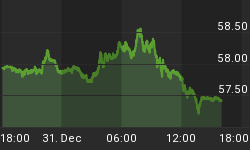Wall Street racked up a strong finish last week with as investors looked past an anticipated December Fed interest rate hike. The S&P 500 ended its strongest week in almost a year, while the Dow Jones industrial average erased its year-to-date loss. As reported by Reuters, Minutes from the Fed's October meeting, released on Wednesday, hardened expectations of a December interest rate hike and hinted at a cautious approach after that. Many Wall Street Analysts believe that raising rates next month will be interpreted as a sign of confidence in the U.S. economic recovery. "There's more risk now that if they don't raise in December, then people will worry that we're still not out of the woods," said Jerry Braakman, chief investment officer at First American Trust, in Santa Ana, California, which manages $1 billion. With little inflation on the horizon, the Fed is likely to raise borrowing costs only gradually next year, which should help keep Wall Street content, Braakman said. The S&P gained 3.3% for the week, its best showing since December. The Dow rose 3.4% for the week and the Nasdaq added 3.6%. Next week is probably going to be light trading volume, with many investors taking time off for the Thanksgiving holiday.

A standard chart that we use to help confirm the overall market trend is the Momentum Factor ETF (MTUM) chart. Momentum Factor ETF is an investment that seeks to track the investment results of an index composed of U.S. large- and mid-capitalization stocks exhibiting relatively higher price momentum. This type of momentum fund is considered a reliable proxy for the general stock market trend. We prefer to use the Heikin-Ashi format to display the Momentum Factor ETF. Heikin-Ashi candlestick charts are designed to filter out volatility in an effort to better capture the true trend. As indicated in the updated chart below, investors have suddenly turned bullish. Stocks have converted to a confirmed uptrend with room to continue moving higher.

Gold futures finished lower on last week after the precious metal succumbed to pressure from a strong dollar, marking its fifth consecutive weekly decline. Gold fell to the lowest level in more than five years as investors shook off lingering worries about the terrorist attacks in Paris and bought assets perceived as risky, such as stocks, dulling interest in the metal. The strong dollar also put downward pressure on treasury bonds.

After experiencing first down week of the fourth-quarter, stocks rebounded strongly to have one of the best performing weeks of the year. Recent analysis is still valid "...quarterly results remain solid for equity indexes. Interest rate sensitive asset classes such as bonds and precious metals remain depressed ahead of the Feds December interest rate announcement..."

The CBOE Volatility Index (VIX) is known as the market's "fear gauge" because it tracks the expected volatility priced into short-term S&P 500 Index options. When stocks stumble, the uptick in volatility and the demand for index put options tends to drive up the price of options premiums and sends VIX higher. Last week's analysis "...Next week is critical for determining the markets' trend..." The market reversed the trend as the S&P 500 has its best week of the year and volatility sank back to recent support.

The American Association of Individual Investors (AAII) Sentiment Survey measures the percentage of individual investors who are bullish, bearish, and neutral on the stock market for the next six months; individuals are polled from the ranks of the AAII membership on a weekly basis. The current survey result is for the week ending 11/18/2015. The most recent AAII survey showed 30.80% are Bullish and 30.50% Bearish, while 38.70% of investors polled have a Neutral outlook for the market for the next six months. The current survey result continues to support range-bound trading.

The Nation Association of Active Investment Managers (NAAIM) Exposure Index represents the average exposure to US Equity markets reported by NAAIM members. The blue bars depict a two-week moving average of the NAAIM managers' responses. As the name indicates, the NAAIM Exposure Index provides insight into the actual adjustments active risk managers have made to client accounts over the past two weeks. The current survey result is for the week ending 11/18/2015. Third-quarter NAAIM exposure index averaged 56.15%. Last week the NAAIM exposure index was 68.58%, and the current week's exposure is 58.47%. As mentioned last week "... Quarterly earnings season is winding down and money managers are probably leery of increasing equity exposure until after the Fed announcement..."

Trading Strategy
Last week's analysis played out as advertised when we commented "...the week before Thanksgiving has an overall bullish history...Any weakness next week could be a good entry point for new longs ahead of the usually bullish Thanksgiving holiday. There is usually solid strength during the week after options expiration since 2001..." Wall Street racked up a solid week, with technology, industrials, industrials, healthcare, financials and consumer stocks making gains and investors looking beyond a widely expected December interest rate hike.

Feel free to contact me with questions,
















